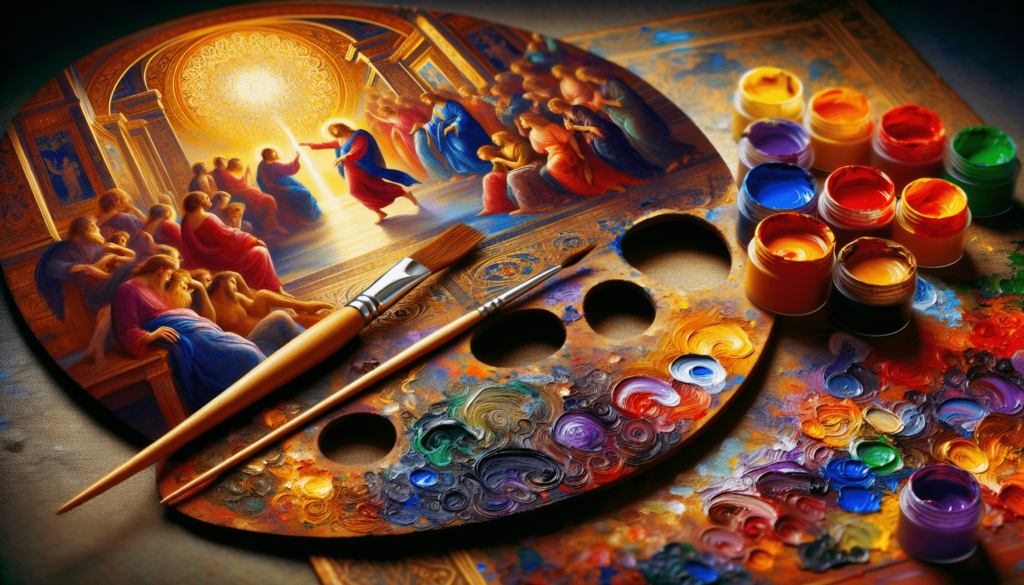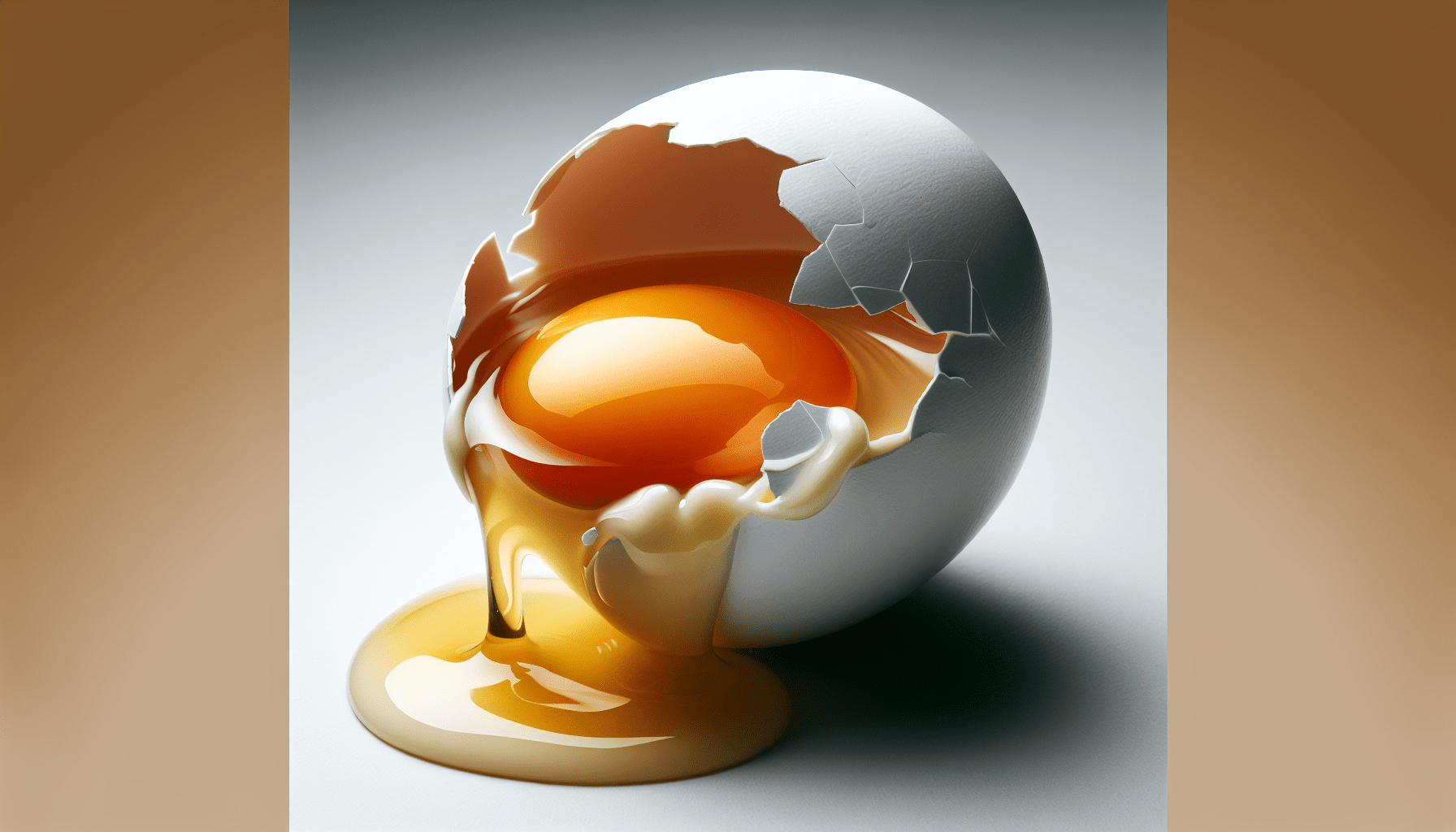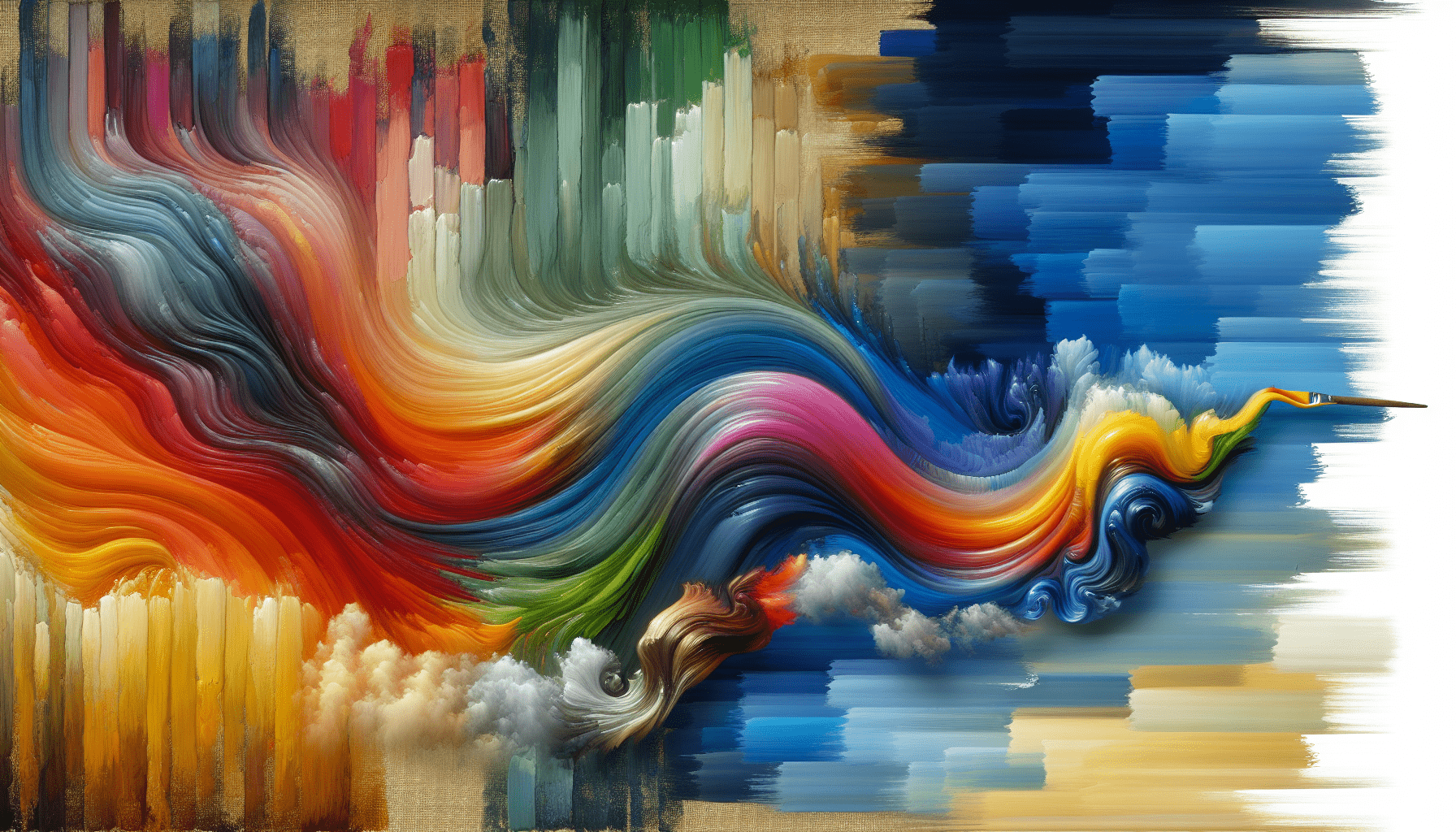Tempera painting is a unique art form that has been practiced for centuries, revered for its vivid colors and meticulous detailing. This method employs pigments mixed with egg yolk, water, and occasionally other additives to create an impressive range of hues and textures. Unlike oil or acrylic paints, tempera dries quickly, allowing artists to layer colors and achieve intricate designs with precision. Ranging from the iconic Byzantine and Renaissance masterpieces to contemporary works, tempera painting continues to captivate art enthusiasts across the globe with its timeless beauty and distinctive characteristics.
Definition
Overview of tempera painting
Tempera painting is a technique that involves using pigments mixed with a water-soluble binder to create artworks. It is an ancient method that has been used for centuries, particularly during the Renaissance period. This painting medium offers unique qualities and is known for its durability and long-lasting color.
Explanation of tempera as a medium
Tempera is a type of painting medium that consists of pigment particles suspended in a water-soluble binder, such as egg yolk or egg white. The pigment particles are finely ground to ensure a smooth and even consistency in the paint. tempera paint dries quickly and forms a hard, glossy surface when applied to a suitable surface.
Comparison to other painting techniques
When comparing tempera painting to other painting techniques, one notable difference is the use of a water-soluble binder. Unlike oil paintings that use oil as a medium, tempera paintings have a unique luminosity and matte appearance. The use of tempera also allows for greater control and precision in brushwork due to its quick-drying nature.
History
Ancient origins of tempera painting
The origins of tempera painting can be traced back to ancient civilizations. The Egyptians, Greeks, and Romans all used tempera for their artworks. The technique gained popularity due to its ability to create vibrant and long-lasting colors. Ancient tempera paintings have been found on walls, pottery, and even mummy portraits, showcasing the versatility of this medium.
Renaissance popularity
Tempera painting reached its peak during the Renaissance period. Artists such as Giotto di Bondone, Botticelli, and Piero della Francesca used tempera extensively in their works. The brilliance of tempera colors, coupled with the precision it offered, allowed artists to create highly detailed and realistic paintings. Masterpieces like Giotto’s “The Lamentation” and Botticelli’s “The Birth of Venus” exemplify the skill and beauty of tempera paintings during this era.
Modern usage and revival
While the popularity of tempera declined with the rise of oil painting techniques, it has experienced a revival in modern times. Many contemporary artists and art enthusiasts have rediscovered the beauty and versatility of tempera painting. Its preservation and restoration have also become essential endeavors, as they shed light on the historical significance and techniques of tempera.

Composition
Ingredients of tempera paint
Tempera paint is composed of three primary ingredients: pigment, binder, and water. Pigments are finely ground particles that provide color to the paint. Traditional pigments used in tempera include natural minerals and organic substances. The binder, typically egg yolk or egg white, serves as the adhesive that binds the pigment particles together. Water is added to achieve the desired consistency of the paint.
Binding agents used
The most common binding agent used in tempera painting is egg yolk. Its ability to create a stable emulsion with the pigment particles makes it an ideal choice. However, egg white can also be used as a binding agent, providing a slightly different consistency to the paint. Other binding agents, such as gum arabic or casein, can be mixed with egg yolk to enhance the durability and handling properties of the paint.
Variations in composition
While egg tempera is the most well-known form of tempera painting, there are variations in its composition. Some artists may choose to add additional binding agents, such as oil or resin, to modify the properties of the paint. These variations give artists more options in terms of drying time, surface finish, and color intensity.
Application
Tools and techniques used in tempera painting
Tempera painting requires specific tools and techniques to achieve desired results. Artists typically use brushes made of natural materials, such as sable or hog hair, to apply the paint. The fine bristles allow for precise control and the creation of intricate details. Other tools used in tempera painting include palette knives for mixing paints and ruling pens for creating sharp lines.
Brushwork and layering
Tempera painting lends itself well to precise brushwork and layering. Artists can build up layers of thin, translucent paint to create depth and luminosity in their artwork. The quick-drying nature of the paint allows for seamless layering without muddying or blending colors. This technique is particularly effective in creating realistic textures and achieving a high level of detail.
Surface preparation
Before applying tempera paint, the surface needs to be prepared appropriately. Traditionally, artists would use a wooden panel that has been sealed with a layer of gesso. Gesso is a mixture of gypsum or chalk and animal glue, and it provides a smooth and absorbent surface for the paint. Other surfaces like canvas or paper can also be used, but they may require additional preparation to ensure proper adhesion.

Advantages
Durability and long-lasting color
One of the significant advantages of tempera painting is its durability and long-lasting color. The use of egg yolk as a binder creates a stable and hard surface that can withstand the test of time. The pigments used in tempera are also known for their resistance to fading and discoloration, ensuring that the artwork retains its vibrancy for centuries.
Quick drying time
Unlike oil paints that can take days or even weeks to dry, tempera paint dries quickly. This fast-drying nature allows artists to work more efficiently, as they can proceed to the next layer or detail without waiting for the paint to dry. The quick drying time also enables artists to create crisp and precise brushwork without fear of smudging or blending colors unintentionally.
Versatility and range of effects
Tempera painting offers artists a wide range of effects and techniques. Artists can create smooth, flat areas of color or build up layers to achieve texture and depth. The quick-drying nature of tempera allows for controlled blending of colors and the creation of subtle transitions. It also lends itself well to glazing techniques, where transparent layers of paint are applied over previously dried layers to create luminosity and depth.
Disadvantages
Fragility and susceptibility to cracking
While tempera paintings are known for their durability, they can be delicate and prone to cracking if not handled or stored properly. The hard and brittle surface of tempera can be susceptible to stress and changes in humidity. It is essential for artists and collectors to take precautions when framing or displaying tempera artworks to minimize the risk of damage.
Limited ability for blending and texture
Compared to oil or acrylic paints, tempera has limited ability for blending colors seamlessly. The fast-drying nature of the paint makes it challenging to achieve smooth gradients or soft transitions between colors. Additionally, tempera paint does not lend itself well to creating thick, impasto textures like those achievable with oil paints.
Prone to moisture damage
Tempera paintings can be sensitive to moisture and are at risk of being damaged by exposure to excessive humidity or water. The water-soluble nature of the binder used in tempera makes it vulnerable to moisture-related issues such as mold growth or color bleed. Artists and collectors must ensure that tempera artworks are stored in a controlled environment to prevent moisture-related damage.
Famous Artists
Giotto di Bondone
Giotto di Bondone, an Italian painter during the 14th century, is renowned for his contributions to the art of tempera painting. His masterpiece, “The Lamentation,” showcases his mastery of tempera techniques, such as delicate layering and precise brushwork. Giotto’s ability to capture human emotions and create a sense of realism influenced many artists that followed.
Botticelli
Sandro Botticelli, a prominent figure of the Italian Renaissance, was known for his exquisite tempera paintings. His iconic work, “The Birth of Venus,” exemplifies his skill in using tempera to create luminous skin tones, flowing drapery, and intricate details. Botticelli’s contributions to the art world have solidified his place as one of the greatest tempera painters in history.
Piero della Francesca
Piero della Francesca, an Italian painter of the 15th century, was celebrated for his innovative use of tempera. His scientific approach to art can be seen in his masterpiece, “The Resurrection.” Piero’s meticulous attention to detail, precise application of tempera, and use of light and shadow set him apart as a master of tempera painting.
Applications
Religious art
Tempera painting has long been employed in religious art due to its ability to create luminous and sacred imagery. The precise brushwork and layering techniques used in tempera allow artists to depict intricate details in religious icons, altarpieces, and murals. The durability of tempera paintings also ensures that these artworks can withstand the test of time in places of worship.
Icon painting
Icon painting, a significant tradition in Eastern Orthodox Christianity, often involves the use of tempera. The use of egg tempera in iconography has deep roots in this religious art form. The methodical layering and delicate blending techniques used in icon painting create ethereal and spiritually significant images that are revered by believers.
Illuminated manuscripts
During the Middle Ages, tempera was the preferred medium for illuminating manuscripts. The brilliance and longevity of tempera colors made it ideal for adding intricate details and vibrant illustrations to religious texts. The combination of meticulous brushwork and rich pigments created visually stunning illuminated manuscripts that continue to captivate viewers today.
Fresco secco technique
Tempera has also been used in the fresco secco technique, where the paint is applied to dry plaster. By mixing the pigments with a binder such as egg yolk, artists can achieve a more vibrant and detailed result compared to the traditional fresco technique. The use of tempera in fresco secco allows for greater control and longevity of the artwork.
Modern Usage
Contemporary artists using tempera
Although oil and acrylic paints dominate the modern art world, there are still artists who embrace tempera as their medium of choice. These contemporary artists appreciate the luminosity and precision that tempera offers. They continue to experiment and push the boundaries of tempera painting, combining traditional techniques with new approaches to create unique and captivating artworks.
Tempera in illustration and graphic design
Tempera has found a place in illustration and graphic design, particularly in traditional and nostalgic styles. The matte finish and versatility of tempera make it suitable for creating vintage-inspired illustrations and designs. Artists and designers often utilize tempera to evoke a sense of nostalgia or to achieve a specific aesthetic that may not be achievable with digital tools.
Preservation and restoration of tempera art
The preservation and restoration of tempera artworks are crucial in maintaining artistic heritage and historical significance. Understanding the composition and techniques used in tempera painting is essential for conservators and restorers. Proper handling, storage, and conservation techniques are employed to ensure the longevity and integrity of tempera artworks, allowing future generations to appreciate their beauty.
Conclusion
In conclusion, tempera painting is a unique and historically significant technique that has captivated artists and art enthusiasts for centuries. Its use of pigment particles suspended in a water-soluble binder, such as egg yolk, creates a durable and highly pigmented paint. Throughout history, artists like Giotto di Bondone, Botticelli, and Piero della Francesca have showcased the beauty and mastery achievable through tempera painting. Though it experienced a decline in popularity, tempera has experienced a revival in modern times, with contemporary artists still utilizing its luminosity and precision. From religious art to illuminated manuscripts, tempera painting has left an indelible mark on the art world and continues to be appreciated for its historical significance and continued relevance in the modern art scene.



